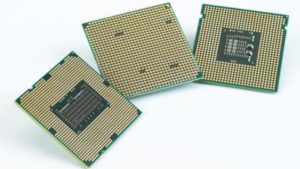So Intel has the i series processors, and AMD has the A series processors. The Intel i series i3-i5-i7 start with the first generation and currently are at the eighth generation. So what does that really mean to the end user? It all depends on the users needs. There is almost no difference between the Intel i series first and second generation. The third generation delivers real turbo-boost as well as 3.0 USB ports. The 3.0 USB ports allow downloads that are 10 times as fast as the 2.0 USB ports. If you do a lot of file transfers this really means a lot to you. Say you need to transfer 200 gigabytes of pictures from and external drive to another computer. A 2.0 USB port would take around 4 hours, while a 3.0 would take 40 minutes.
The turbo-boost technology is really more a marketing tool. Turbo-boost allows the motherboard to determine when the processor needs more power. You may have a processor that normally hums along at 2.4 Ghz and when the boost kicks in it may go to 2.8 Ghz. In a desktop computer who cares about saving power. I would rather have the full power all the time. In a laptop Ghz numbers means the higher the number the more power the laptop will consume. If you go mobile a lot this could be an important factor to you.
If you look at the generations after the third generation, it’s a lot to do about nothing to the average user. If you are a gamer or if you do high resolution photo rendering the faster processor can make a big difference.
AMD has developed the A series of processors. To date they are A1 through A-10. Anything below A6 is a joke. They are really slow and they are power hogs. A-8 and A-10 are a different story. These processors are typically cheaper than Intel i series, and they produce some goop CPU speeds. These AMD processors also can come with what they call “Vision”. These processors provide some great integrated graphics by sharing the CPU chip. Most people think that the newest Intel chips are better, but you get a lot of bang for your buck with an A-8 or A 10.
The most important thing to decide on is actually what kind of a user you are. If you are the type of person where money is not an issue you might just want the fastest out there, regardless of your actual needs. If you are a standard “surf the Internet user” you don’t need to break the bank on an expensive computer. Also remember that desktop computers are very upgrade-able. You can add a graphics card and processor at a later date when you decide you need to. Laptops are upgrade-able to a point. Many laptops do not allow the CPU or graphics to be upgraded.
I have not covered gaming for a good reason. Most gamers just can’t get enough power, graphics and ram. For gaming, what is enough today is old school tomorrow!

